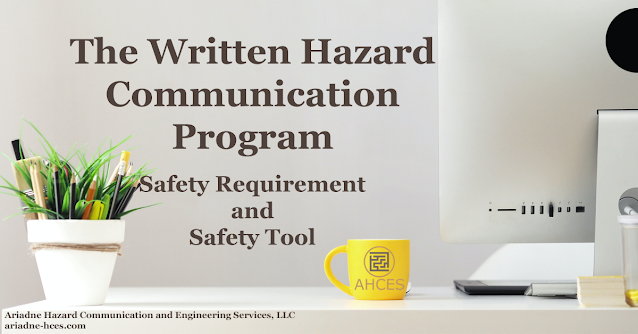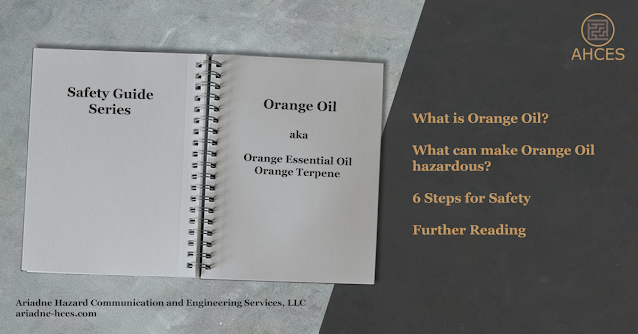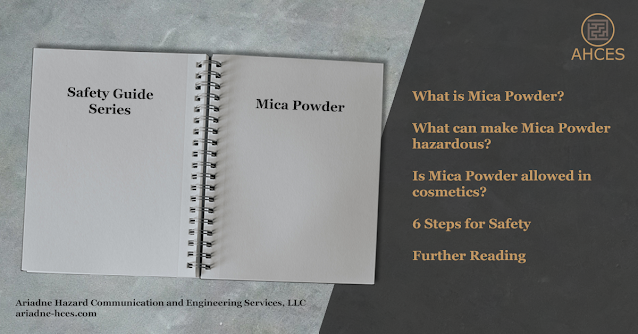The Written Hazard Communication Program - Safety Requirement and Safety Tool
An Introduction to the Written Hazard Communication Program
A Written Hazard Communication Program (WHCP) is a technical and regulatory document that is used to describe how the criteria for compliance with OSHA's Hazard Communication Standard (HCS) are being met by an employer.
The full text for the Hazard Communication Standard can be found at 29 CFR 1910.1200 and the requirements for the Written Hazard Communication Program are found at 1910.1200(e).
What is a Written Hazard Communication Program (WHCP)?
The WHCP is a written document which describes how an employer will meet the requirements for labels and other forms of warning, safety data sheets, and employee information and training that are necessary at the workplace. The WHCP must also contain a list of the hazardous chemicals known to be present in the workplace and the methods the employer will use to inform employees of hazards associated with non-routine tasks.
The WHCP has important additions if there a multi-employer workplace, where employees from multiple employers are on the same location. For multi-employer workplaces, the WHCP must also describe how the other employer(s)' employees will be informed of the hazardous chemicals covered by the WHCP, where they can access safety documents including SDSs, and precautionary measure to be taken to protect against the hazardous chemicals.
Importance of Complying with WHCP Requirements
Legal and Regulatory Compliance
The Hazard Communication Standard, which includes the WHCP requirements, was the 2nd most commonly cited regulation in 2022 and 2023 on the federal level. OSHA does enforce the regulations proper communication of what chemical hazards are in the workplace. This includes having a proper WHCP alongside SDSs and chemical labels.
Minimizing Risk and Occupational Hazards
In addition to being a regulatory requirement, WHCP provide important information for maintaining a safe, and therefore productive, work environment.
By summarizing how a workplace is compliance with the HCS rules, the creation and maintenance of a WHCP document serves as a means of checking how compliance the workplace chemical safety systems are.
Utilizing the WHCP as a Check
Creating a WHCP document includes describing the compliance with other parts of the HCS. This creates opportunities to check if other requirements are being met.
For example, if a material is included on the list of known hazardous chemicals on site, but is missing in the SDS binder, then a problem has been identified and can be corrected.
Utilizing the WHCP to Compare Compliance Levels
The WHCP can also be used to compare how thoroughly different categories of hazardous chemicals are being covered in workplace safety.
For example, if a workplace contains both flammable and corrosive chemicals, both will require the same basic safety training and labels but will require different responses to accidents. Does each category of chemical hazard receive the same hours of training? If not, why?
Conclusion
The WHCP is both a regulatory document and a handy safety tool. Understanding what the WHCP is and how it can be used to create a safer work environment is important.
Learn more about the importance of OSHA even
when Self-Employed, and take
advantage of the official OSHA
eTools to aid in compliance.





Comments
Post a Comment